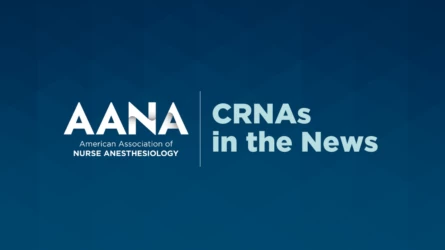Congratulations, PANA & Sarah!
Association & CRNA Sarah Trau Take Home National Awards at Annual Congress
The 2023-24 AANA Communications Committee announced that both the Pennsylvania Association of Nurse Anesthetists (PANA) and Sarah Trau, MS, CRNA, won national awards for their public relations and communications work over the last year.
PANA won the award for Best Promotional Effort for National CRNA Week and Sarah won for Best Public Relations Effort by an Individual for all her work to ramp up communications among the association! (Learn more about these awards on AANA’s website HERE.)

We are so proud of Sarah, who chairs PANA’s Communications Committee, and the whole crew for bringing home these individual and team awards, which were handed out Aug. 3 during AANA’s Awards and Recognition Luncheon at Annual Congress in San Diego.
Both PANA and Sarah’s efforts impressed the committee, which recognized their overall contributions to the positive image of the nurse anesthesiology profession.
During National CRNA Week in Pa. on Jan. 21-27, PANA ran a multi-faceted campaign that featured a variety of organic social media posts, paid digital ads, and traditional media spots to reach members and the public on the platforms where they get their information.

Among the first-of-its-kind projects for PANA, the association officially launched its TikTok account, spearheaded by Sarah and featuring videos of CRNAs talking about their profession and wishing members a happy CRNA Week. Be sure to check out the page: https://www.tiktok.com/@panacrna!
Overall, the campaign was a huge success, with engagement rates ranking above baselines for similar advocacy and awareness campaigns, meaning people not only saw the messages, but they engaged and shared them widely.
With its formal launch during CRNA Week, PANA’s TikTok account received more than 1,900 video views among 1,400 unique viewers. The campaign resulted in 65 profile views, 96 likes and 27 shares. Under Sarah’s leadership, the platform continues to grow in popularity and will remain a critical tool going forward with member engagement.
If you missed anything during CRNA Week, or just want to relive some of the news, especially after these national team and individual awards, please visit the campaign website: https://www.panaforqualitycare.com/2024-crna-week.
GALLERY:
Related:
CRNAs from Pa. Take Home Awards During AANA Annual Congress
















































